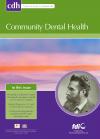Community Dental Health

- Cover Date:
- September 2008
- Print ISSN:
- 0265 539X
- Vol:
- 25
- Issue:
- 3
Enamel fluorosis in 12- and 15-year-old school children in Costa Rica. Results of a National Survey, 1999
In 1987, Costa Rica implemented a national salt fluoridation programme using sodium fluoride (225-275 mg Fˉ/kg). Objective: To evaluate the prevalence and severity of enamel fluorosis (EF) in Costa Rican schoolchildren as part of the biological monitoring of the salt fluoridation programme. Basic research design: In 1999, eight calibrated examiners (interexaminer Kappa=0.73) recorded EF in the maxillary anterior teeth and first bicuspids (FDI’s teeth 14 to 24) using Dean’s Index and artificial light without drying. The multistrata probability sample included 12 and 15-year-old schoolchildren (n=2,499), representing seven regions of the country. Data were analyzed in SAS and SUDAAN to account for sampling design. Setting: Costa Rican schoolchildren. The 12-year-old cohort was born when salt fluoridation started. Participants: 3,758 children in selected age groups. Main outcome measures: Dean’s index was calculated for cuspid to cuspid (teeth 13 to 23) and premolar to premolar (teeth 14 to 24). Results: Prevalence of EF (very mild or higher) at age 12 years was 17% for teeth 13 to 23 and 32% when teeth 14 and 24 were included. At age 15 years, the prevalence was 12% for teeth 13 to 23 and 25% when teeth 14 and 24 were included. Large regional differences were observed: from 10% to 76% among 12-year-old children and from 6% to 50% among 15-year-old children. Conclusions: In the aggregate, EF prevalence is within the range expected for a salt fluoridation programme, but regions with higher severity need further investigation on additional sources of fluoride including environmental sources. Prevalence figures were higher in the cohort born at time of fluoridation.
Key words: Costa Rica, dental fluorosis, enamel fluorosis, oral epidemiology, prevalence and severity, salt fluoridation, survey methods.
- Article Price
- £15.00
- Institution Article Price
- £
- Page Start
- 178
- Page End
- 184
- Authors
- M.T. Salas-Pereira, E.D. Beltrán-Aguilar, P. ChavarrÃa, I. Solórzano, H. Horowitz
Articles from this issue
- Title
- Pg. Start
- Pg. End
- Comparison of two methods in deriving a short version of oral health-related quality of life measure.
- 132
- 136
- The presenting complaints of low income adults for emergency dental care: An analysis of 35,000 episodes in Victoria, Australia.
- 143
- 147
- Cariogenic and erosive potential of the medication used by HIV-infected children: pH and sugar concentration
- 170
- 172
- Enamel fluorosis in 12- and 15-year-old school children in Costa Rica. Results of a National Survey, 1999
- 178
- 184
- Short Communication - Fissure sealants on permanent first molars – consequences of a one-year delay
- 191
- 192
